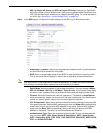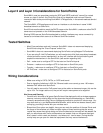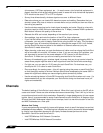
SonicPoint > SonicPoints
526
SonicOS 5.8.1 Administrator Guide
If the SonicPoint does locate, or is located by a peer SonicOS device, via the SonicWALL
Discovery Protocol, an encrypted exchange between the two units will ensue wherein the
profile assigned to the relevant Wireless zone will be used to automatically configure
(provision) the newly added SonicPoint unit.
As part of the provisioning process, SonicOS will assign the discovered SonicPoint device a
unique name, and it will record its MAC address and the interface and zone on which it was
discovered. It can also automatically assign the SonicPoint an IP address, if so configured, so
that the SonicPoint can communicate with an authentication server for WPA-EAP support.
SonicOS will then use the profile associated with the relevant zone to configure the 2.4GHz and
5GHz radio settings.
Modifications to profiles will not affect units that have already been provisioned and are in an
operational state. Configuration changes to operational SonicPoint devices can occur in two
ways:
• Via manual configuration changes – Appropriate when a single, or a small set of changes
are to be affected, particularly when that individual SonicPoint requires settings that are
different from the profile assigned to its zone.
• Via un-provisioning – Deleting a SonicPoint unit effectively un-provisions the unit, or clears
its configuration and places it into a state where it will automatically engage the provisioning
process anew with its peer SonicOS device. This technique is useful when the profile for a
zone is updated or changed, and the change is set for propagation. It can be used to update
firmware on SonicPoints, or to simply and automatically update multiple SonicPoint units in
a controlled fashion, rather than changing all peered SonicPoints at once, which can cause
service disruptions.
Updating SonicPoint Settings
You can change the settings of any individual SonicPoint list on the Sonicpoint > SonicPoints
page.


















